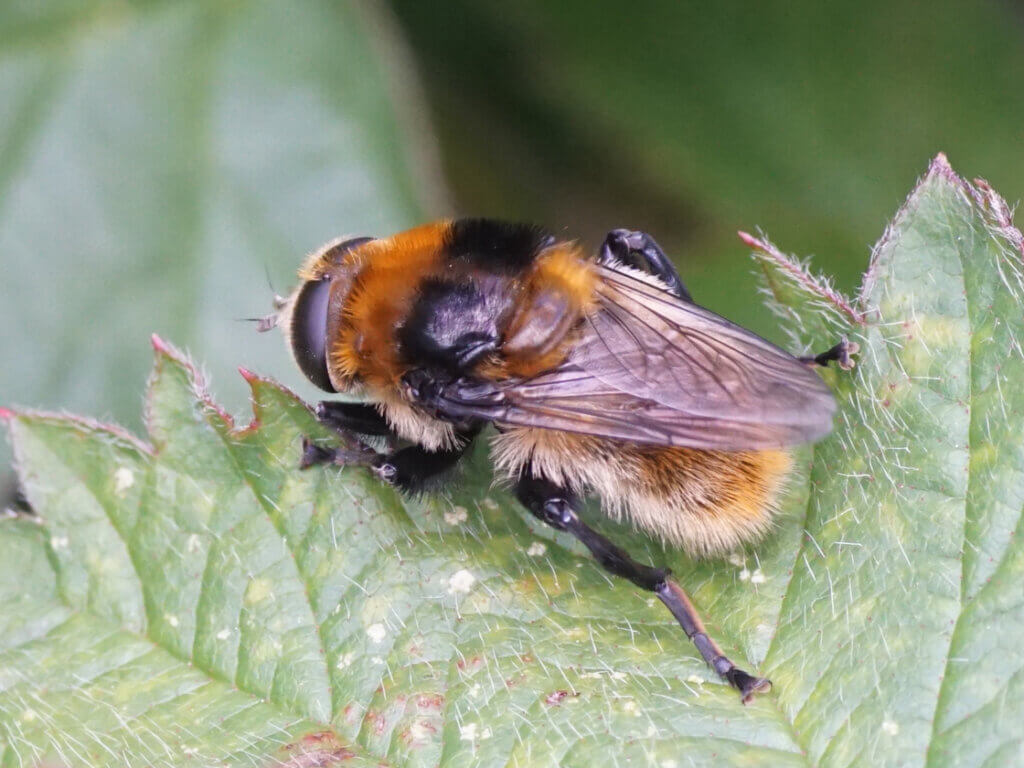
Social Distancing Week 10. Large Narcissus Fly.
Paul writes: I’ve started seeing this distinctive fly around the village in the last week. It will be a regular visitor to a lot of gardens at this time of year. The Large Narcissus Fly (Meredon equestris) is a hoverfly which is so named because its larvae develop in the bulbs of daffodils and other bulb-forming plants.
The fly can be confusing because it comes in several different colour forms. This one has its thorax half brown and half black, others will have it all brown or all black. Also the tail can vary from white to buff to red. The constant features are the all black legs and white facial hairs. Its size, up to 15mm long, and hairy body mean it can at first be mistaken for a bumblebee. However if you are used to watching bumblebees the behaviour is quite different. It doesn’t have the same industrious habit of constantly flitting between flowers. A closer look will show the difference in eyes and antennae, also of course it only has a single pair of wings. Like lots of creatures it has a certain jizz, which once you have sorted out makes it easier to identify.
The fly wasn’t recorded in the UK until the end of the 19th century and is thought to have been introduced from mainland Europe by the importing of daffodil bulbs. Its eggs are laid on a plant leaf close to the ground. The larva burrows into the bulb, where it spends around 10 months feeding, then pupates in the soil before emerging as an adult. The adults have a short lifespan and only live for a couple of weeks. The fly is fairly common throughout the UK but gets scarcer as you go north. Peak emergence time is from the end of May to the end of June.
[registration_form]